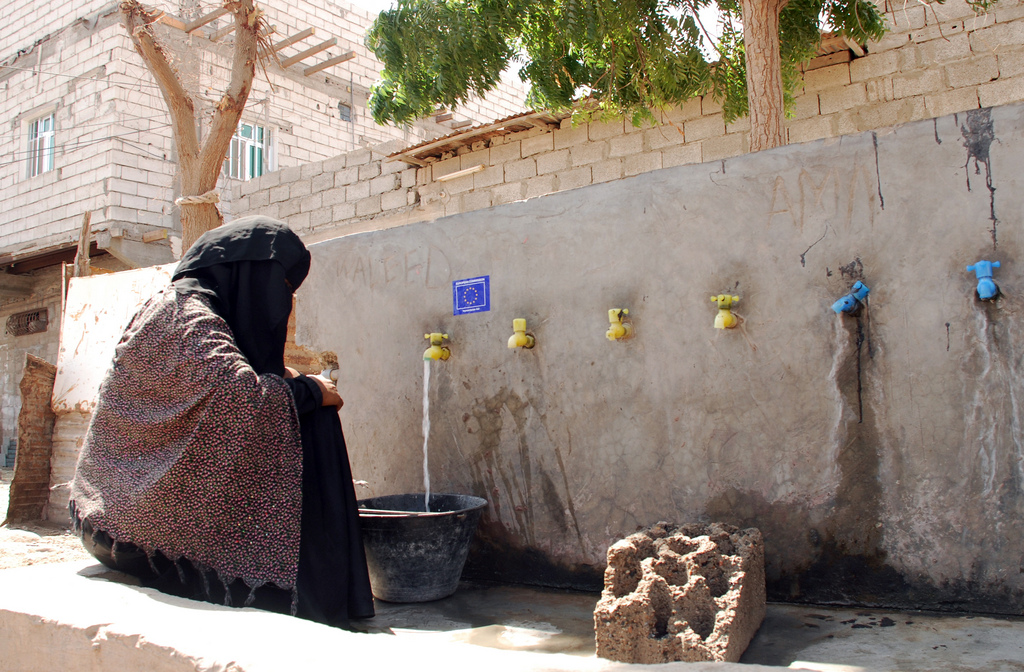Bringing Complex Humanitarian Emergencies Out of the Shadows
Natural disasters tend to demand our attention – the huge swirling clouds of an approaching storm; the red-orange blazes; the floodwaters dangerously rising. Yet, there are slow-onset disasters, ones that take dramatic tolls on individuals and families, frequently taking them away from their communities and homelands that should demand our attention as well. Complex Humanitarian […]

Natural disasters tend to demand our attention – the huge swirling clouds of an approaching storm; the red-orange blazes; the floodwaters dangerously rising. Yet, there are slow-onset disasters, ones that take dramatic tolls on individuals and families, frequently taking them away from their communities and homelands that should demand our attention as well. Complex Humanitarian Emergencies (CHEs) involve an acute emergency layered over ongoing instability. Multiple scenarios can cause CHEs, such as the civil wars in Syria and Yemen, the man-made political crisis in Venezuela, or the public health crisis in the Democratic Republic of Congo. CHEs are disasters that tend to be in the shadows, obscuring the human suffering and wide-ranging impacts.
My first professional humanitarian position was as a refugee caseworker in East Africa. Over the course of two years I traveled to Ethiopia, Uganda and Cote d’Ivoire, but spent most of my time in the northwestern corner of Kenya. Kakuma is a remote town in Turkana between nowhere and nowhere, the site of Kakuma Refugee Camp, one of the world’s oldest and largest operating formal refugee camps with over 193,000 refugee residents who have fled from emergencies involving armed conflict, famine and/or persecution.
Many refugees in Kakuma have fled from emergencies that are connected to Complex Humanitarian Emergencies – (CHEs) where state, societal and community structures and/or resources are severely reduced from norms. These conditions often lead to mass population movement whether it be in-country as an Internally Displaced Person (IDP) or across borders as a Refugee. The vast majority of Kakuma’s refugees arrived from complex humanitarian emergencies that are protracted crises, marked by an escalating series of shocks and emergencies.
Complex Humanitarian Emergencies affect communities and families like any natural disaster, but the human aspects are considerably different and require a different lens and approach. Quite often the circumstances contributing to the emergency are manmade, with components of conflict, politics/governance, economics and/or climate change. The impacts are exacerbated in nations with weak infrastructure, governance and economies to produce these CHEs.
Current CHEs with growing concern and increasing needs are in Yemen and Venezuela, two states with tens of millions of people affected, sub-regional consequences and, as with natural disasters, the most vulnerable disproportionally impacted. In Yemen, more than thirty million people live in the throes of armed conflict amid a civil war fueled by regional actors that has gone on for nearly a decade. The United Nations’ most recent report to the UN Security Council, stated that every day there are reports of civilians killed or injured when shells land on their homes, snipers fire on their communities or landmines or other munitions explode. According to the UN Refugee Agency (UNHCR), millions of internally displaced Yemenis live in makeshift shelters in urban and rural areas. Of the refugees that have left Yemen, many flee to Oman, Saudi Arabia, Djibouti, Ethiopia, Somalia and Sudan.
In Venezuela, two decades of socioeconomic and political crises have brought the country, and its people, to its knees. Some scholars say that the economic crisis in Venezuela is worse than the Great Depression in the U.S. According to a recent New York Times article, “Venezuela’s gross domestic product is expected to lose another 10 percent this year after shrinking by more than two thirds since 2013, the largest decline in modern history outside a war zone, according to the International Monetary Fund.”
More than four million Venezuelans have already fled the country due to extreme levels of unemployment, coupled with severe challenges in accessing daily necessities such as food and medication because hyperinflation has extremely devalued the Venezuelan Bolivar. These factors have created a CHE in Venezuela and surrounding countries, particularly Colombia.
Recovery from CHEs look distinctly different, including timelines, implementation, vision and commitment. While many emergency management professionals will state that after a natural disaster, traditional recovery starts as the relief phase subsides, with some early recovery having started alongside the relief phase (e.g. debris management, cash for work or cash transfers, school feeding programs, etc.). In humanitarian crises, while there are interventions (the most basic of shelter and food, for example) that are benefiting individuals impacted by the CHE, there is great need for a sustained injection of resources and support to transition from relief into recovery.
Those affected by CHEs are often among the most vulnerable – unaccompanied minors who have recently lost their parents, guardians or entire family. Individuals acutely shocked by the CHE and in need of timely psychosocial support initiatives. Or perhaps, those who have lost their homes or their livelihoods and require external resources as the CHE continues to unfold and their displacement stretches into months and years.
The reality is, providing humanitarian assistance in such environments requires an implementing partner that has proven experience in complex operations, often in very dangerous areas. These partners should have some years of programming in the country with an in-country or national partner. Their partnerships quite often include a government ministry or a national or local humanitarian or social organization with a like-minded mission.
As a funder, it is important to accept a vision for what the outcome should be and bring a long-term commitment. That vision quite often will include faces of individuals benefiting from recovery investments that provide offramps from the ongoing CHE. Commitment should not be viewed simply in dollars, but rather as multi-year support to allow time for meaningful community and individual recovery in two-, three- or five-year program commitments. Multi-year programs have higher rates of success by using the extended time to also build local capacity and transfer knowledge through new partnerships and opportunities.
There is a role for everyone in supporting persons affected by Complex Humanitarian Emergencies to help take them out of the shadows and into our collective consciousness. Individuals thousands of miles away can assist by simple actions such as advocacy and financial support. Philanthropies can align their traditional portfolios with the areas and options for supporting recovery initiatives. And governments must utilize diplomacy while providing resource support (e.g. money, logistics, military, expertise). CHEs should be a part of your disaster programs and considerations. Your support can ensure that funding dollars are getting to the impacted areas. And your attention can help garner more awareness of the perilous situations and desperate needs.
To learn more about this urgent topic, I invite you to join us for a webinar on Thursday, Feb. 13 at 2 p.m. ET. Complex Humanitarian Emergencies: Philanthropy’s Role in Recovery. Register here.
We welcome republication of our content. Please credit the Center for Disaster Philanthropy.
More like this

Announcing Global Recovery Fund Grants to Yemen and Venezuela

